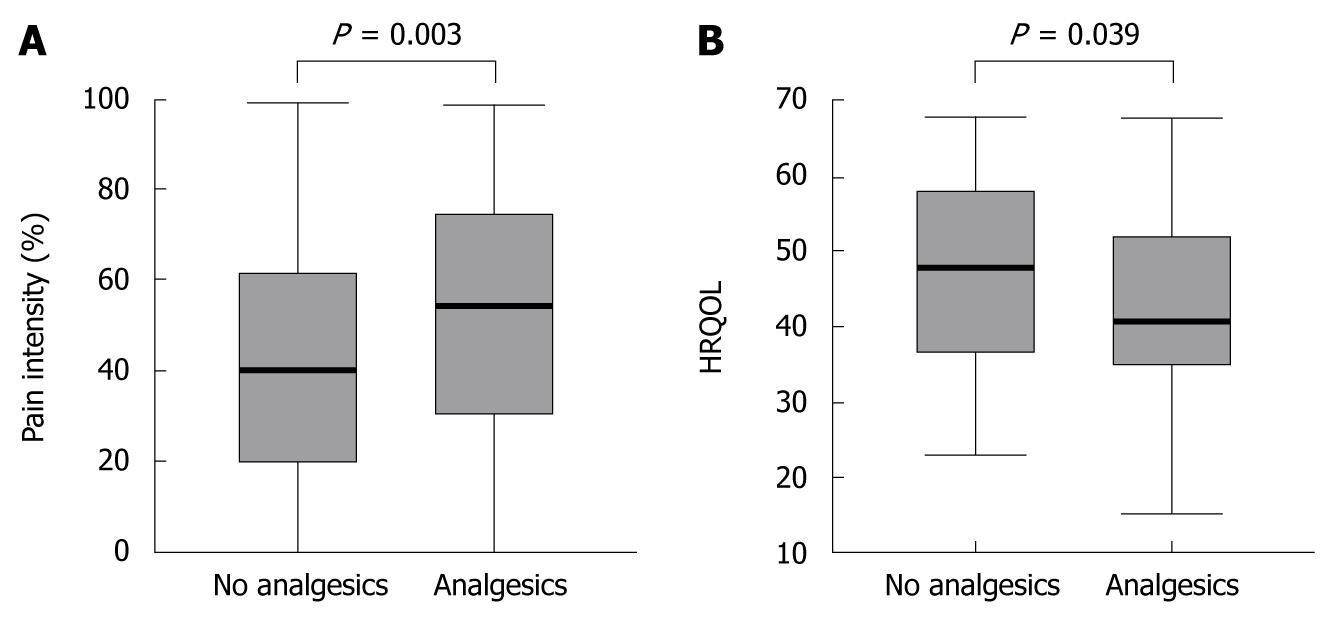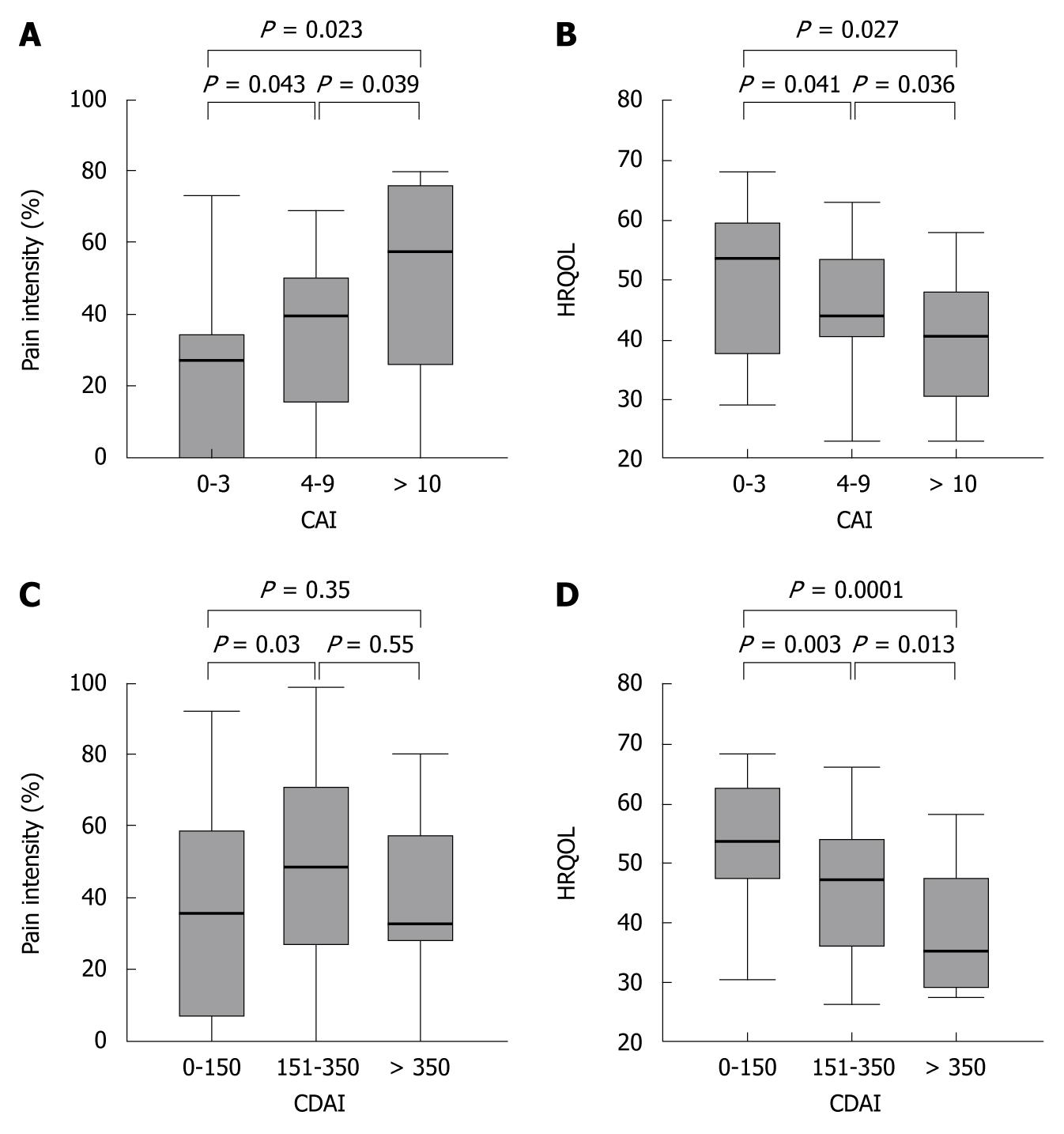Copyright
©2010 Baishideng.
World J Gastroenterol. Jul 7, 2010; 16(25): 3168-3177
Published online Jul 7, 2010. doi: 10.3748/wjg.v16.i25.3168
Published online Jul 7, 2010. doi: 10.3748/wjg.v16.i25.3168
Figure 1 Distribution of pain in female and male patients.
The degree of abdominal pain is quite similar in males and females, although females complain more often of arthralgia.
Figure 2 Differences in pain intensity (A) and health-related quality of life (HRQOL) (B) in Crohn’s disease (CD) and ulcerative colitis (UC) patients.
CD and UC patients have similar pain levels and HRQOL scores. Compared to healthy controls IBD patients have decreased HRQOL (C).
Figure 3 Comparison of (A) pain intensity and (B) HRQOL in patients with and without analgesic treatment.
Pain intensity is even higher in patients receiving analgesic treatment.
Figure 4 Distribution of disease activity index and pain intensity (A) and disease activity index and HRQOL (B) in UC patients and CD patients (C, D), respectively.
UC patients with high disease activity have significantly higher pain levels and lower HRQOL. Although pain intensity does not correlate with CDAI, HRQOL correlates well with CDAI.
- Citation: Schirbel A, Reichert A, Roll S, Baumgart DC, Büning C, Wittig B, Wiedenmann B, Dignass A, Sturm A. Impact of pain on health-related quality of life in patients with inflammatory bowel disease. World J Gastroenterol 2010; 16(25): 3168-3177
- URL: https://www.wjgnet.com/1007-9327/full/v16/i25/3168.htm
- DOI: https://dx.doi.org/10.3748/wjg.v16.i25.3168












